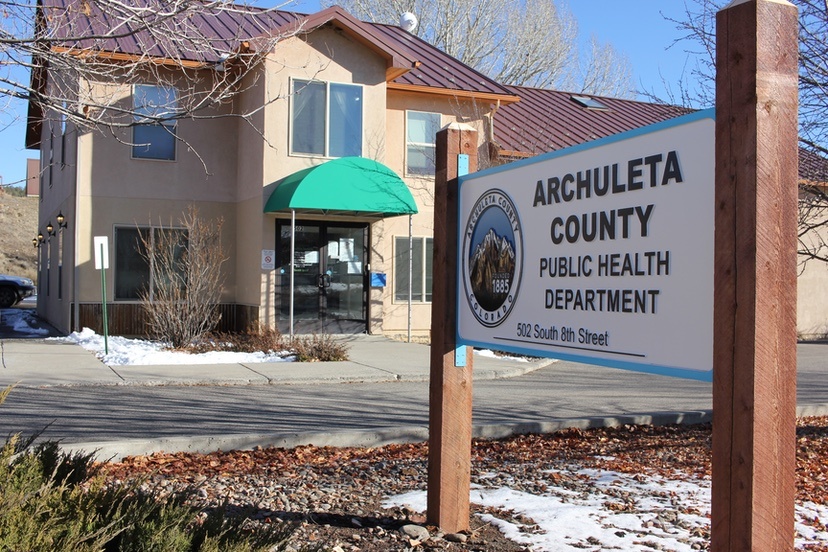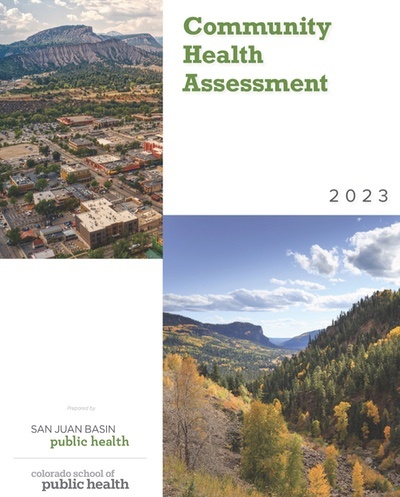As the Archuleta County Board of Health (BOH) continued to discuss the 2023 “Community Health Assessment” created by the San Juan Basin Public Health (SJBPH) district in cooperation with the Colorado School of Public Health, it became apparent that some board members were not entirely satisfied with data presented in the report.
Nor was I satisfied. I had complained about SJBPH data, in fact, last April, based on its willingness to ask ordinary, untrained citizens to offer their opinions about rather technical public health issues.
I have a ‘love/hate’ relationship with ‘data’… because the people who gather it sometime ask meaningless, unimportant, or misleading questions.
SJBPH has now been dissolved, but they left behind their assessment, thinking that our new Public Health Department would find it useful when creating the ‘five-year improvement plan’ required of public health agencies in Colorado. Our Board of Health seems to feel that potentially important data is missing from the assessment.
BOH President John Bruss:
“While I think these types of surveys are useful, they should be presented almost as ‘supplemental, complementary data’ to an overall assessment of public health… or what are the determinants of health within our community. We know, for example, that some of our leading causes of morbidity and mortality are things like heart disease and diabetes and cancer and things like that. So it would be nice to be able to report those data, and then be able to supplement it with… well, how do the people in the community… how are they perceiving their health?
“So I do think it’s important for us, as a board of health, to become familiar with this assessment, so when [Department Director Ashley Wilson] and her team begin to develop the five-year plan, we have some familiarity with this assessment. But that we also have a better understanding of what the determinants of health are, in our community.”
Director Wilson and board member Jessica Cox agreed that the assessment provided a ‘snapshot’ but that additional data would be needed to flesh out a truly meaningful five-year plan.
Tomorrow, I will offer some opinions — speaking as an ordinary citizen — about what, exactly, is meant by the term, “public health”.
But first, let’s hear about suicide, something that the BOH considered during their discussion of the “Community Health Assessment”.
Dr. Bruss directed the board to a graph on page 42 of the assessment. The graph shows “43.12 Suicides” in Archuleta County, per 100,000 population. (Age-adjusted rate in 2022.)

Dr. Bruss:
“If you look at this graph visually, you might come away thinking, ‘Oh, we really have a horrible problem in Archuleta County with suicide. Now, we might, but I think this type of graph begs more questions. What is the actual number? And you would also want to know, were the suicides occurring in a certain age group in Archuleta County?..
“If we were to take just this graph alone, and develop a five-year plan, this might be one of our highest priorities. Because it looks like Archuleta County has a really horrible suicide rate.
“This really requires us to dig deeper into the data, and get a better understanding of this.”
Fortunately, the data is not too hard to find. You can find some of it online, at the Colorado Department of Public Health and Environment. The “age-adjusted” suicide rate for Archuleta County varies dramatically from year to year. Since 2006, most years saw 3 or fewer suicides in Archuleta County, but 2009 saw 7 suicides. 2022 saw 5 suicides — all males. The average since 2006 appears to be fewer than 4. That would make our longer-term overall rate (not “age-adjusted”) around 27 per 100,000. The suicide rates in Colorado, in rural communities, have historically been higher than in urban areas — closer to 25 per 100,000 (age-adjusted).
If Archuleta County’s suicides were mainly among elderly people, that would apparently drive up the “age-adjusted” rate. (I searched online for an explanation for the use of “age-adjusted rates” but was unable to find one.)
The general public is not allowed to see all of the suicide data, because our community has a relatively small number of suicides, and small numbers not typically released, to protect family privacy. But our new Public Health Department should have access to all the ‘confidential’ numbers.
Dr. Bruss and Department Medical Director David Schaeffer discussed the lack of data related to cancer detection and treatment in the assessment.
Here’s board member Stacey Foss, who runs an addiction and substance abuse counseling service:
“I put suicide prevention on my list of concerns. Reading it in the report just confirmed things that I’ve heard in the community — not only from law enforcement but also through the schools. Because it’s definitely an issue at every age. And the other for me was drug overdose and poisoning prevention, because there seems to be an issue with that as well…”
It would appear, from CDPHE data, that the number of deaths from drug overdoses in Archuleta County in 2022 was identical to the number of suicides: 5.
40 deaths in 2022 were from heart disease. 29 were from cancer. 10 were from COVID. 9 were from non-vehicular accidents. i was from a vehicle accident.
49 deaths were from “All Other”. Not sure what “All Other” means.
Ms. Foss:
“The other thing, in thinking about the assessment and reading a lot of the comments — “There’s just not access to care, there’s just not access to care…”
“It also figures into a lot of other common conversations, that come up in the community as well.
“I just lot a provider, because they can’t afford their housing. So when we look at the health piece, it’s not just providers — it’s the overall structure of the community, to support the people who want to do the work…”


